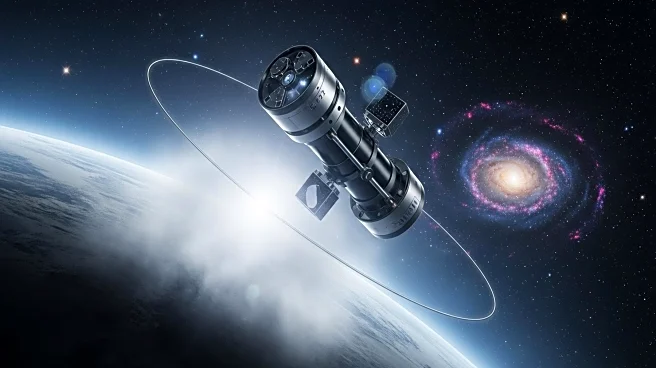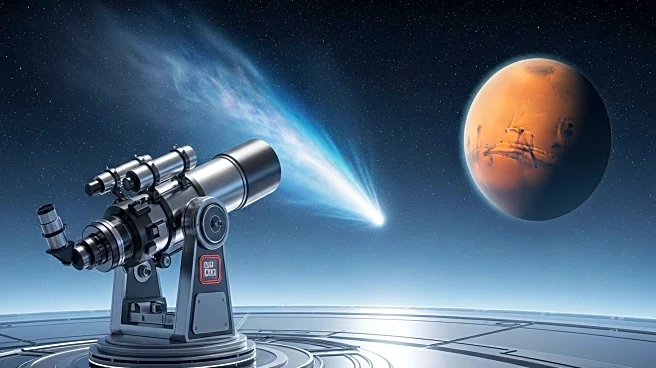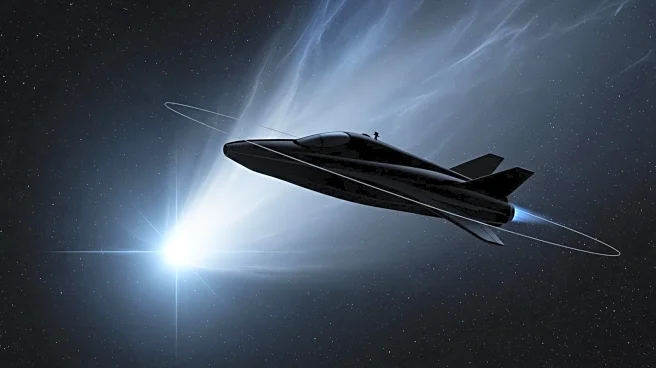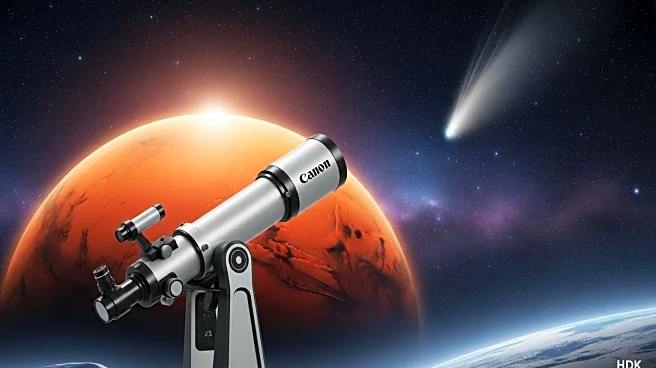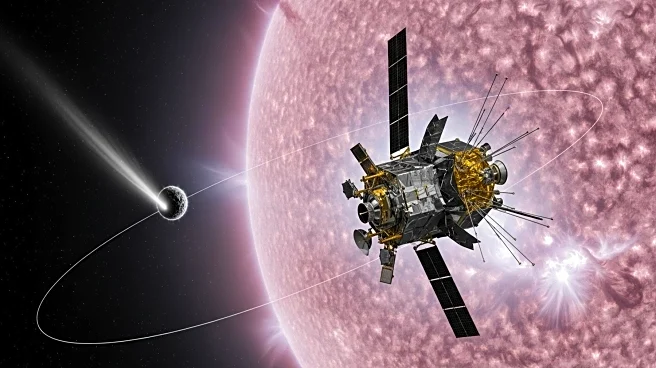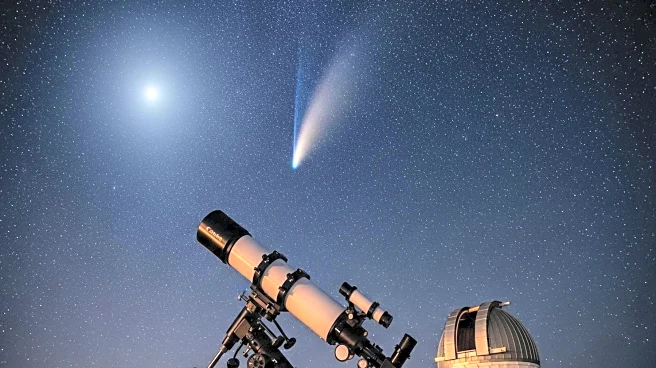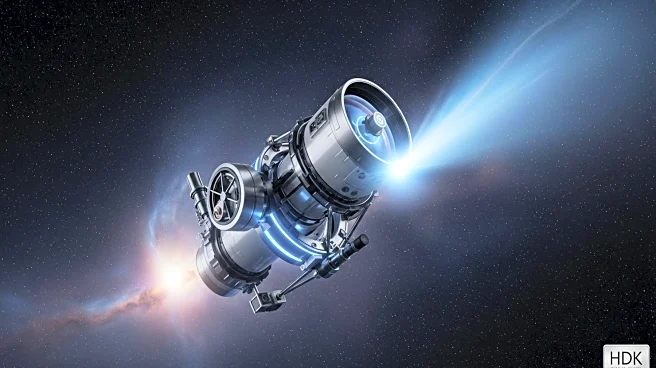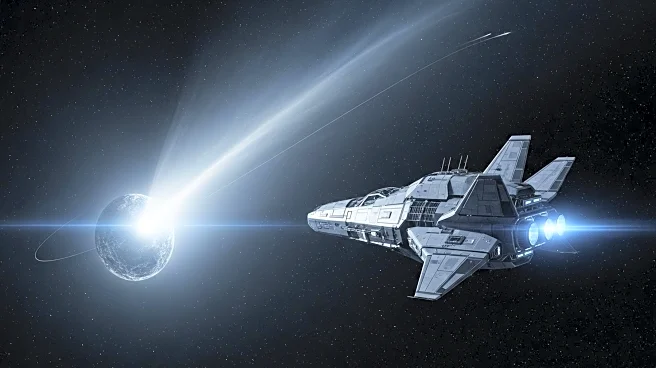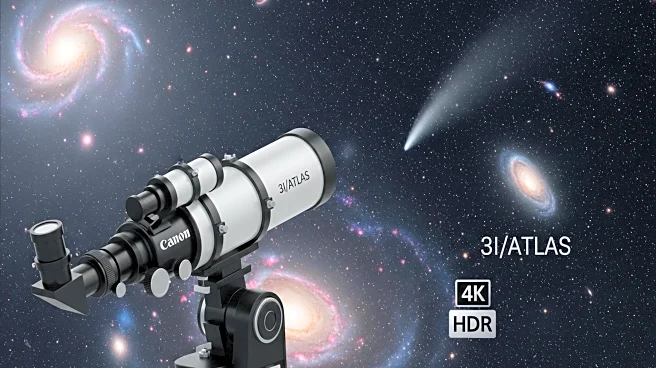What is the story about?
What's Happening?
NASA's SPHEREx telescope has identified a significant presence of carbon dioxide gas surrounding the interstellar comet 3I/ATLAS, marking it as the third known interstellar object to enter our solar system. The comet, discovered by the ATLAS project, is the largest and brightest interstellar visitor observed so far. SPHEREx's findings suggest that 3I/ATLAS shares characteristics with typical solar system comets, including a water-ice nucleus and a carbon dioxide coma. This discovery provides insights into the composition and thermal history of comets from other star systems, indicating that 3I/ATLAS may have originated from the thick disk of the Milky Way and is potentially older than any comet found in our solar system.
Why It's Important?
The detection of carbon dioxide around 3I/ATLAS by SPHEREx is significant for understanding the similarities and differences between interstellar and solar system comets. This discovery could enhance knowledge about the formation and evolution of comets, offering clues about the conditions in distant star systems. The ability of SPHEREx to map the sky in multiple wavelengths provides astronomers with unprecedented access to chemical fingerprints, aiding in the study of celestial objects. The findings could lead to broader implications for astronomy, potentially influencing theories about the origins of comets and the materials present in other parts of the galaxy.
What's Next?
As 3I/ATLAS approaches its closest point to the sun, scientists anticipate increased sublimation of water ice, which may result in a larger water coma and a more pronounced dust tail. SPHEREx, along with other NASA spacecraft, will continue to monitor the comet, aiming to gather more data and insights. The SPHEREx team plans to publish detailed findings, contributing to ongoing research and potentially sparking new discoveries in the astronomical community.
Beyond the Headlines
The study of 3I/ATLAS by SPHEREx highlights the transformative capabilities of modern space telescopes in exploring interstellar phenomena. The ability to detect and analyze chemical compositions of distant objects could lead to advancements in understanding the universe's history and the processes governing celestial bodies. This research underscores the importance of continued investment in space exploration technologies.
AI Generated Content
Do you find this article useful?
